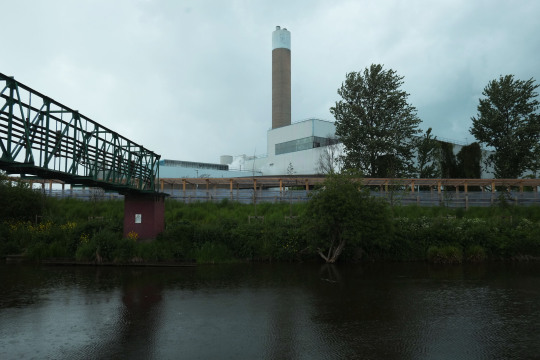#river lea
Text
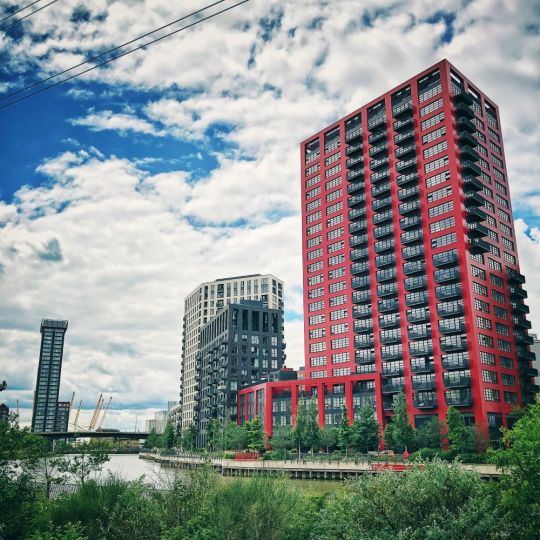
Canning Town, East London, July 2023.
#canning town#city photography#east london#the lea#london#original photographers#photographers on tumblr#photography#river lea#towers#urban photography
12 notes
·
View notes
Text
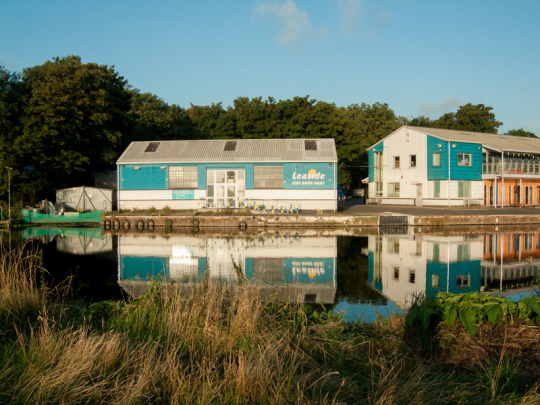
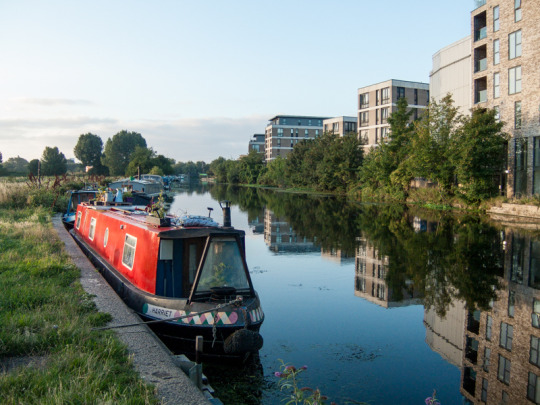
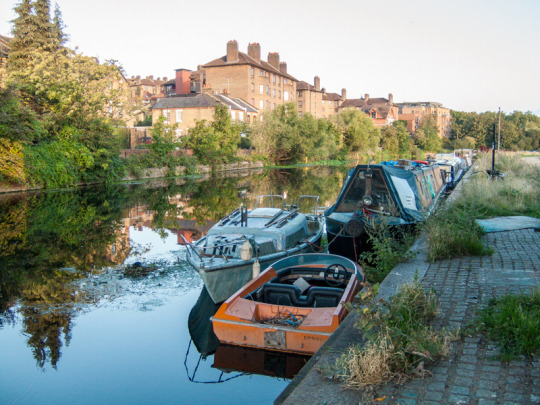

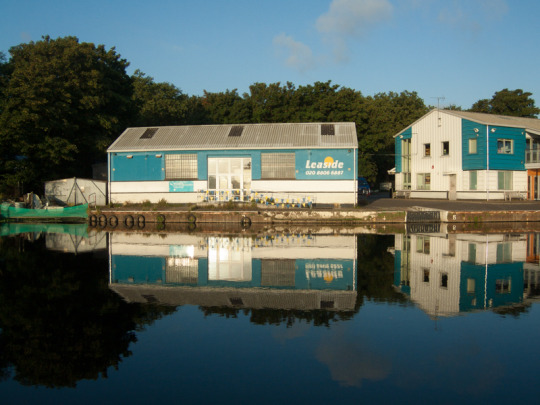
River Lea | Fujifilm FinePix E900
4 notes
·
View notes
Photo
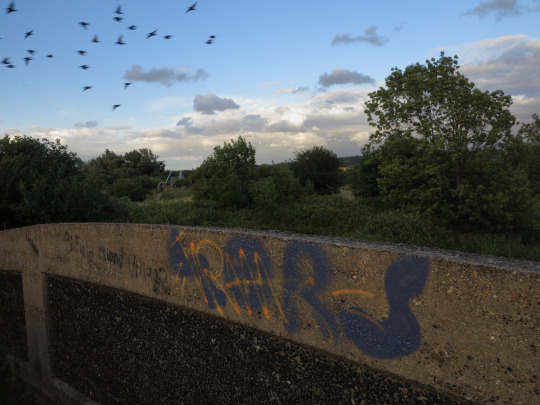
Enfield Island Village, London; 28.6.2020
#photography#photographers on tumblr#dubmill#London#Enfield Island Village#England#UK#Britain#concrete#footbridge#River Lea#graffiti#original photography#original photograph#walk#Upper Walthamstow to Enfield Island Village via Epping Forest#2020#28062020
23 notes
·
View notes
Text
Oren Ambarchi, Johan Berthling and Andreas Werliin Interview: Winning Concepts

Photo by Thobias Fäldt
BY JORDAN MAINZER
Well, that didn't take nearly as long. A mere two years after releasing the once dormant and eventually critically acclaimed Ghosted, Oren Ambarchi, Johan Berthling, and Andreas Werliin are releasing its follow-up on Friday via Drag City. The trio returned to Studio Rymden in Stockholm last June, with years of performing together under their belt, and laid down the tracks for Ghosted II in a mere two days. Like its predecessor, Ghosted II delves into jazz and drone music, has numerical track titles, and features guitar from Ambarchi that sounds like an organ, album art by Pål Dybwik, and video art by Cédrick Eymenier. Less like its predecessor (though not wholly unlike it), Ghosted II plays with dynamics, is more improvised with minimal overdubs, and roots itself in everything from ambient music to funk. Oh, and its numerical track titles are in Swedish instead of Roman numerals.
Seriously, Ambarchi, Berthling, and Werliin could follow the same four-track formula with the same featured artists every time and I would be more excited with every release. That's how potent Ghosted II is. “en” sports brilliant textural contrasts, pattering drums, scraggly guitar, and barely-there bass, but nonetheless wears a zesty groove. “två” I can most aptly describe as chrome lounge jazz, rife with repeated bass, slow hand percussion, and cold, warbling guitars that pulsate at constantly changing speeds. “tre” is where we first truly hear those inexorable Ambarchi guitar sounds, whirring and shapeshifting with a light chirp and glitch as Werliin's percussion circumvents Berthling's bass. The song sounds like it's traveling through a prickly continuum. And “fyra” ends the set with shimmering ambiance, syncopated bass and drums steady until Werliin jumps into a clattering groove, eventually letting Ambarchi take front and center before the three descend into silence. Ghosted II is the type of album as easy to listen to as it is heady and complex, an achievement that should further this trio's welcome emergence in the experimental music realm.
Oh, and I forgot to mention another similarity to Ghosted: Ambarchi, Berthling, and Werliin once again were willing to answer some questions from me over email about the album. Read their responses below, edited for clarity, including some can't-miss music recommendations.
Since I Left You: How would you say Ghosted II is different from the first record, and how is it a continuation of what you were doing on Ghosted?
Oren Ambarchi: I would say that it's a continuation from the first one. The approach in the studio was very similar: We simply got together and improvised with little discussion beforehand. It was recorded very quickly--from memory, all the pieces are first takes, and there was minimal overdubbing.
SILY: How did playing live as a trio inform Ghosted II? When you went in to the recording, did you think of it like a live concert with no audience?
OA: Playing live has been really great, as we've been developing our language as a trio from show to show, and this definitely impacted the new one. Like the first trio recording, the vibe in the studio was very relaxed. It was like playing together in someone's lounge room. Personally I tried to approach the new one with newer guitar sounds, many of which I discovered in real-time whilst we were recording. I was hoping my playing would be a little different to the playing on the first record. I didn't want to repeat myself, and I'm sure the others felt the same way regarding how they approached the recording. So the new album is, on the one hand, a continuation from the first album, but on the other hand, it's an exciting new development for all of us.
Johan Berthling: I think playing live has merged our sounds together quite a bit. We know each other's playing a lot better. When recording the first album, we had nothing. Now, we have a sound and a foundation we can continue to build on. For me, the studio (could be) a magical environment where all is possible. The live situation has so many parameters that are not controllable, so I want to keep them apart. I never look at recording as a live performance.
Andreas Werliin: Playing live in front of an audience is very different from being in a studio recording session.[It has] different energy. It’s weird: The great live shows rarely transform into a good recording. It’s usually too much information. What we experienced when playing live was that we could use much more dynamics than on our albums.
In a studio recording, you can use the room and vibe to play less and still keep it interesting, making small changes instead of the big movements we do live.
SILY: Is there something unique about Studio Rymden that fosters creative collaboration?
OA: It feels super relaxed recording there, which really suits our vibe and somehow enhances what we are going for. I think we are all inspired by the room at Rymden and play off of the space.
JB: It has a really nice living room atmosphere and has all the equipment we need. Daniel [Bengtson], who runs it, is also a great and knowledgeable guy making everyone feel at ease.
AW: [It's] a good sounding, very relaxed place. [It] feels like being at a home party.
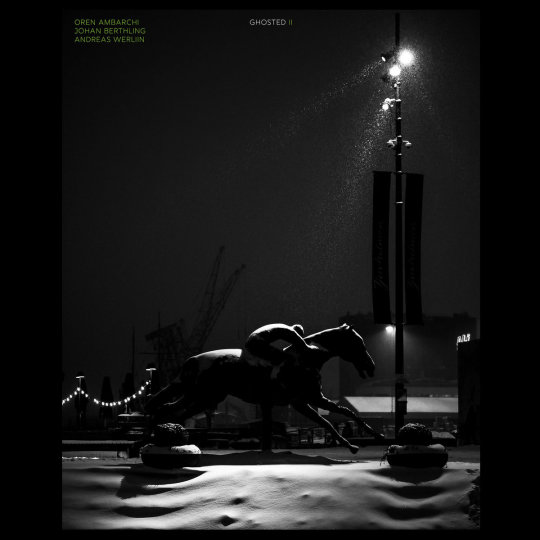
SILY: Why was it important for you to have continuity between the two albums' visual identities (cover art, music videos)?
JB: Why change a winning concept? :)
AW: These days, things are moving so fast. Everything and everybody has to change all the time to not lose the audience's attention, both visually and musically. We took the opportunity to go against that movement, I guess.
SILY: What inspired the track titles this time around?
OA: Laziness. It's 1/2/3/4 in Swedish. Maybe we'll pick another language when we do another release.
SILY: How did the songs on the first record end up evolving live? Do you foresee these songs having a similar live evolution?
OA: Absolutely. It's been really fun expanding on the pieces on the first album in a live context. Those pieces have really gone places. Some live versions of the pieces have lasted 30-40 minutes each.
We've already been playing some of the new pieces live, too, and they are already morphing into new explorations that are quite different from the recorded versions.
AW: We developed a new form and used more improvisation and a lot more dynamics.
SILY: What's next?
OA: We have some shows coming up as a trio which I'm really looking forward to. I really love playing with Johan and Andreas. My next big show...is a new piece titled "Sous Vide" with conductor Ilan Volkov and the Brussels Philharmonic Orchestra. I'm also hoping to start on a new solo record later this year.
AW: I'm excited to release [Ghosted II]. We’re all pretty busy with other projects and family life, so [I'm] just hoping for peace, love, and understanding in general, I guess.
SILY: Is there anything you've been listening to, watching, or reading lately that you've enjoyed or that's inspired you?
AW: I would highly recommend Brighde Chaimbeul's album The Reeling (River Lea). She will play live in our village on the west coast of Sweden on July 7th in an incredible church. Much welcome.
JB: Lately, I’ve been listening a lot to Howlin' Wolf's Message to the Young and John Lee Hooker and Canned Heat's Hooker 'n Heat. Live, I recently saw a fantastic performance by Evan Parker and Alexander Hawkins in Germany!
OA: [I've been] listening to plenty non-stop, but here's a few recent things that come to mind:
James Rushford's Turzets
An unreleased 1974 live recording of Salamat Ali Khan from Berlin
ML Buch's Suntub (15 love)
Tyshawn Sorey's Continuing (Pi)
Ahmir Khan's Khayal By Ustad Ahmir Khan
RLW's When freezing air stings like ice I shall breathe again (Drag City)
Lenny Breau's Quietude
Eduardo Mateo
Glenn Gould's version of Brahms: 10 Intermezzi
Mikel Rouse Broken Consort
Tirzah
Weather Report's Live & Unreleased
I also just picked up an amazing new remaster of Genesis' The Lamb Lies Down on Broadway, which I've been playing endlessly.
I recently watched Dog Day Afternoon with my 16-year-old last night. It was good to revisit that one. I also recently saw a great UK documentary on Cornelius Cardew with footage of the Scratch Orchestra and AMM. Other than that, it's always Law & Order before bed.
Reading:
Scott McClanahan's The Sarah Book
Ian Penman's Fassbinder Thousands of Mirrors
Adrian Sinclair & Allan Kozinn's The McCartney Legacy
Henry Threadgill & Brent Hayes Edwards' Easily Slip Into Another World
Dorothy B. Hughes' The Expendable Man
youtube
#interviews#johan berthling#drag city#studio rymden#daniel bengtson#brussels philharmonic#ghosted ii#oren ambarchi#andreas werliin#thobias fäldt#ghosted#drag city records#pål dybwik#dédrick eymenier#ilan volkov#brussels philharmonic orchestra#brighde chaimbeul#the reeling#river lea#howlin' wolf#message to the young#john lee hooker#canned heat#hooker 'n heat#evan parker#alexander hawkins#james rushford#turzets#salamat ali khan#ml buch
0 notes
Text
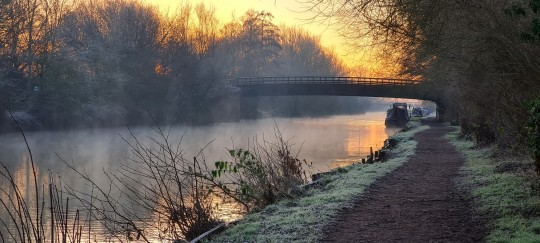
River Lea, Ware, Hertfordshire, England
0 notes
Text
Everybody tells me it's 'bout time that I moved on
And I need to learn to lighten up and learn how to be young
But my heart is a valley, it's so shallow and man made
I'm scared to death if I let you in that you'll see I'm just a fake
Sometimes I feel lonely in the arms of your touch
But I know that's just me cause nothing ever is enough
When I was a child I grew up by the River Lea
There was something in the water, now that something's in me
Oh I can't go back, but the reeds are growing out of my fingertips
I can't go back to the river
But it's in my roots, in my veins
It's in my blood and I stain every heart that I use to heal the pain
Oh, it's in my roots, in my veins
It's in my blood and I stain every heart that I use to heal the pain
So I blame it on the River Lea, the River Lea, the River Lea
Yeah I blame it on the River Lea, the River Lea, the River Lea
0 notes
Text
River Lea by Adele is a song that has an honorary mention but doesn't quite cut it to be on my Ineffable Husbands playlist
0 notes
Text
River Lea Song Lyrics In English- Adele
River Lea friends if you are Looking River Lea song lyrics then you landed right place so don’t worry relaxed and enjoyed the Adele album all songs lyrics peacefully at one place. You can find and read this lyrics easily in any smartphone and Tablet such as Samsung, Motorola, Sony, Xiaomi, Vivo, Oppo, LG, Huawei, Asus, Lava, Micromax, iTel, Nokia, Oneplus, iphone, HTC and other devices. The Micro…
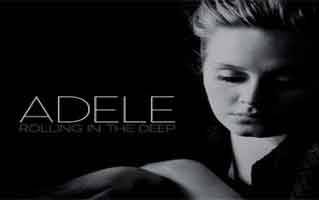
View On WordPress
#Adele#Kobalt Music Publishing Ltd.#River Lea#River Lea Song#River Lea Song Lyrics#Sony/ATV Music Publishing LLC#Universal Music Publishing Group
0 notes
Text
"River Lea"
Adele wrote a song about the River Lea
Quite a lot of which resonated with me.
It flows past Luton Airport Parkway station
And rises and falls in line with inflation.
There's probably a rogue trolley or two sunken beneath
Along with God knows how many guns and sheaths.
I'd often sit on the steps in manor road park
And watch the river until it started to get dark.
Everything around the river changes but the River Lea stays the same
We come, we go, and some of us die in vain.
But one day, the future generations will never know we were alive
Looking at the very same river that lives on to thrive.
#river lea#river#luton#adele#poetry#my poem#depressing poem#short poem#original poem#poetscommunity#poets on tumblr#poets corner#poetsandwriters#poems and quotes#sad poem
0 notes
Text
1 note
·
View note
Text

Canning Town and the River Lea, East London, July 2023.
#canning town#city photography#east london#the lea#london#original photographers#photographers on tumblr#photography#river lea#towers#urban photography
8 notes
·
View notes
Photo
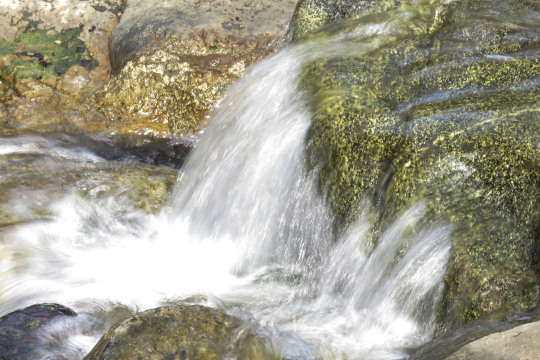
River Lea
-Adele
https://www.youtube.com/watch?v=lw4rjQ8JBcM
0 notes
Text
A watery pilgrimage
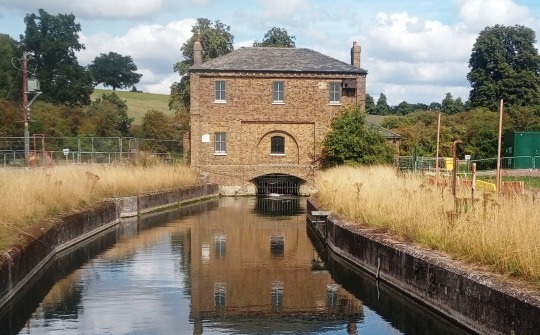
The structure pictured above is called the "New Gauge" because it was built in 1856.
It stands at the start of the New River, which is even less new and not even a river, as my online guide to the New River Path points out - but rather an "aqueduct, completed in 1613, to bring drinking water from Hertfordshire to North London".
The gauge, I learn, "regulates the maximum water intake from the River Lee to 102 megalitres per day." How was the flow regulated before 1856? I wonder.
Hopefully it will become clear in the next stage of our walk. But within minutes, we find the New River Path closed because of works on the railway line it crosses.
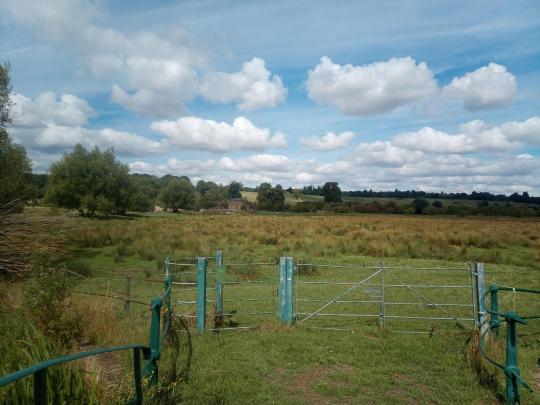
We wander around the Meads, a "unique flood meadow" that has been shared by grazing cows and various forms of aquatic wildlife since medieval times.
But the Meads is not made for hiking – indeed humans are positively discouraged from disturbing its bovine and avian denizens.
We retreat to the banks of the River Lee, where walkers are made welcome.
Eventually we find a perfect spot for a picnic – well, for the £3.50 meal deal we got from Sainsbury's.

Resuming our walk, we reach the town of Ware which, according to a sign, boasts "the largest group of gazebos on a riverside anywhere in Britain".
Most of those structures date from the eighteenth and early nineteenth centuries.
The panel explains, with capitalised gusto: "As the High Street became more noisy and dirty-with the malting wagons jostling with coaches and carts, the Innkeepers and other owners of High Street properties started to build Gazebos at the end of their gardens. These provided a quiet spot for leisure and refreshment away from the noise of the town."

Beyond Ware, the Lea branches off into the Lee.
I turn to Google to clear up the spelling confusion: the River Lea, a major tributary of the Thames, was improved for navigation over the centuries; the Lee Navigation was the name given to the system of canals linked to the Lea from here all the way down to east London.
But wait! I switch to my online guide on my phone: it does say that the New Gauge, 3km upstream, connects the New River to the "River Lee". Another unresolved question.
By now it's mid-afternoon and a "coffee truck" by the Lee Navigation junction offers an inviting choice. As I order refreshments, I can't help remarking on the sound coming out of speakers from the depths of the vehicle.
The genial barista replies: "I just love classical music. There's nothing like it, especially in such surroundings."
Indeed, the melodious piece sounds ideally suited to the bucolic scenery.
"What is it?" I ask.
"Some Russian composer. I can't even pronounce his name. Tarkowsky... something like that."
"Very sweet."
"That's actually the title of the piece: Nutcracker Sweet."
Back at Ware we are able to rejoin the Thames River Path, as the local train station allows us to cross the track. Thus we reach the landmarks we have come to see.

The Broadmead Pumping station (1885, above) was one of many such facilities built to get more from deep wells along the New River, as demand for fresh water soared in London in the nineteenth century.
A few hundred metres upstream is the imposing "Marble Gauge" (below), the original 18th-century device built to control the intake from the Lea. That's one puzzle solved.

Nearby is the "White House", an elegantly dilapidated building that used to contain a sluice gate.
It makes an endearing show of exclusivity: “unauthorised persons”are warned off; above the door a faded sign reads: "Private fishing."

Then we arrive at our main target in this journey of aqueous discovery: Chadwell Spring. This is where it all kicked off – long before the New Gauge, long before the pumping station, long before even the old gauge.
This is the cradle of the New River, the mother of all modern water supply networks.

It doesn't look like much, does it?
This makes it all the more extraordinary that in 1609, a hiker stopped at this very spot and thought: "Mmmm... That water is not stagnant. There must be a spring there. And if I dig a channel that follows the contour line all the way down to London, I can make a lot of money. They're desperate for clean water down there."
Within four years, in 1613, the 62km waterway was completed and the visionary hiker, Hugh Myddelton was a rich man at the head of the world’s first-ever permanent joint-stock company.
We've taken the long way around, but at last we've paid homage to an underrated genius.
For those who want to know more on the history of London's water supply, I strongly recommend Nick Higham's fascinating new book, The Mercenary River.
1 note
·
View note
Text
i just think that river lea by adele is so fucking good!!! like i fr can imagine an edit about medieval times in this or smth
0 notes

